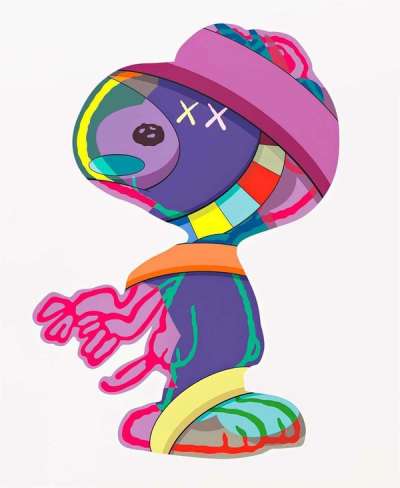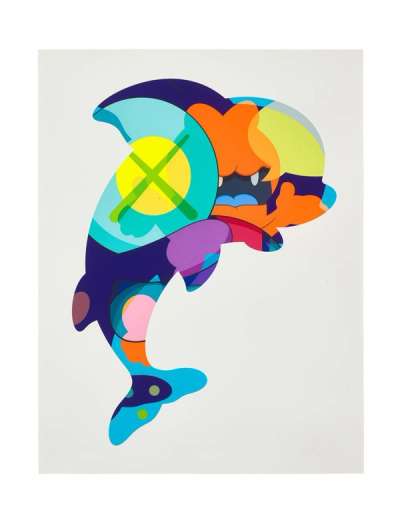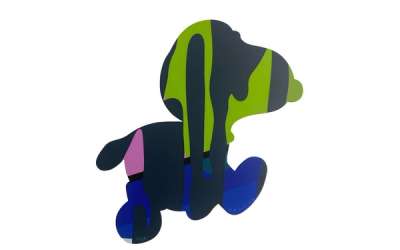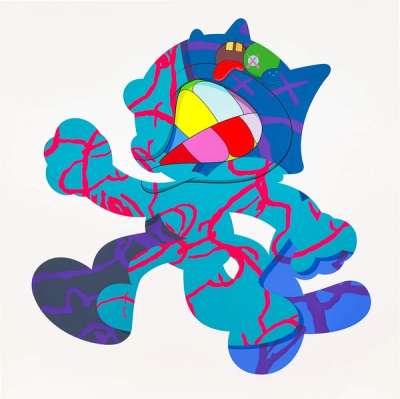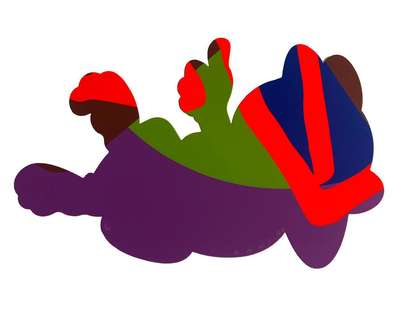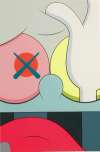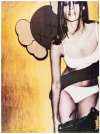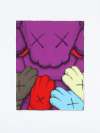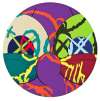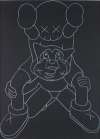Outlines
As per its title KAWS’ Outlines shows well-known characters such as Snoopy and Garfield in silhouette. The works, from a period of artistic experimentation in which KAWS borrowed characters from television, the silhouettes are filled with KAWS’ characteristic bold colours in an abstract blend of pattern and off-kilter cartoon facial features.
KAWS Outlines For sale
Outlines Value (5 Years)
With £34783 in the past 12 months, KAWS's Outlines series is one of the most actively traded in the market. Prices have varied significantly – from £3072 to £40000 – driven by fluctuations in factors like condition, provenance, and market timing. Over the past 12 months, the average selling price was £11594, with an average annual growth rate of 7.59% across the series.
Outlines Market value
Auction Results
| Artwork | Auction Date | Auction House | Return to Seller | Hammer Price | Buyer Paid |
|---|---|---|---|---|---|
 Piranhas When You're Sleeping KAWS Signed Print | 18 Oct 2025 | Mainichi Auction, Osaka | £8,500 | £10,000 | £11,500 |
 The Things That Comfort KAWS Signed Print | 19 Mar 2025 | Forum Auctions London | £6,800 | £8,000 | £10,000 |
 Untitled (Snoopy) KAWS Signed Print | 15 Dec 2022 | Leslie Hindman Auctioneers, Chicago | £2,465 | £2,900 | £3,850 |
 Untitled (Garfield) KAWS Signed Print | 2 Sept 2021 | Raffan Kelaher & Thomas | £2,763 | £3,250 | £3,250 |
 Ankle Bracelet KAWS Signed Print | 21 Jul 2021 | Phillips Hong Kong | £16,150 | £19,000 | £26,000 |
Sell Your Art
with Us
with Us
Join Our Network of Collectors. Buy, Sell and Track Demand
Meaning & Analysis
KAWS’ Outlines collection is from a period of artistic experimentation that uses iconography from televisio, applied to the artist’s signature style.
The prints in the Outlines collection showcase KAWS’ unique visual language and artistic style. KAWS’ artworks can be characterized by their emphasis on colour, bold gestural lines and incorporation of a set of repeated motifs, cartoon characters and distinctive graphics. The Snoopy Portfolio, 2015, for example, features KAWS’ signature crossed out eyes which have become synonymous with the artist’s name. The collection reflects how, through his art, KAWS enjoys appropriating iconic cartoon characters, such as Snoopy, and deconstructing them, making them into abstract paintings.
KAWS frequently takes universally recognisable cartoon characters and appropriates them by adding skull and crossbone heads, crossed out eyes and Mickey Mouse gloves. Alongside the cartoon characters featured in Outlines, KAWS has adapted other popular cartoon characters such as SpongeBob Square Pants, the Smurfs and the Simpsons.
While this collection demonstrates KAWS’ practise of appropriating famous cartoon characters, the artist is also well-known for creating his own impressive cast of stock cartoon characters such as Companion, Chum, Accomplice and Bendy. The creation of these icons resonates strongly with the work of Keith Haring and his impressive collection of repeated icons and motifs, such as the radiant baby, angel, flying devil and barking dog. KAWS’ characters are simple and charming and often appear in timid and shy poses. The characters have brought KAWS international recognition and fame, imbuing the artist with Pop status as a cultural icon of the 21st century who has successfully bridged the division between street art and high art.
KAWS’ artistic style can be compared to Haring and Jean-Michel Basquiat, two leading 20th century artists who emerged from the New York City graffiti subculture of the 1980s. KAWS started experimenting with graffiti when he was a teenager growing up in New Jersey. The artist’s professional name, KAWS, originated from the tag he used to spray paint on buildings. The name KAWS is devoid of meaning and was chosen by teenage Donnelly due to the way the letters looked together and their visual balance. The artist explains: “When your whole art is based on the lettering you choose, you kinda figure out what works together. I just liked the shapes of the k, a, w, s.” KAWS further developed his visual language when he moved to New York in the 1990s and started defacing adverts on phone booths and bus stops, a practise which has become known as ‘subvertising.’ KAWS’ practise of subvertising has likened him to the British street artist, Banksy, and KAWS has since subvertised in Paris, London, Berlin, and Tokyo. Many of KAWS’ cartoon characters were created while he was spray painting over adverts in New York, which reflects how this period of his life deeply marked KAWS’ development as an artist. Like his predecessors, Haring and Basquiat, KAWS first gained notoriety amongst the graffiti world before his work transcended its place in the street and entered the gallery world.
